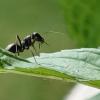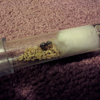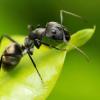- Formiculture.com
- Forums
- Gallery
- Members
- Member Map
- Chat

Can you combine Forelius pruinosis colonies?
Started By
DJoseph98
, Jun 24 2019 6:28 PM
4 replies to this topic
#1
 Offline
-
Posted June 24 2019 - 6:28 PM
Offline
-
Posted June 24 2019 - 6:28 PM
Does anyone know if you can can combine two seperate colonies of Forelius pruinosis (or F. mccooki)? I recently found several more queens, but my first group of three already has a batch of eggs and I wouldn't want to freak them out tossing in more queens all of a sudden. Could I merge colonies when both groups have workers?
I'm not quite certain to what level polygyny in this species is expressed.
I'm not quite certain to what level polygyny in this species is expressed.
Current Colonies
1 x Camponotus nearcticus (Monogynous), 1 x Crematogaster cerasi (Monogynous), 1 x Formica cf. subsericea (Polygynous Two-Queen), 1 x Formica cf. pallidefulva (Monogynous, single worker),
1 x Lasius cf. americanus (Pleometrotic Founding, now Monogynous), 1 x Tetramorium immigrans (Monogynous)
Current Founding Units
1 x Formica cf. subsericea (Monogynous)
Up-To-Date as of 9/15/2020
#2
 Offline
-
Posted June 27 2019 - 3:05 AM
Offline
-
Posted June 27 2019 - 3:05 AM
Not sure you could probably brood boost them
#3
 Offline
-
Posted June 27 2019 - 4:43 PM
Offline
-
Posted June 27 2019 - 4:43 PM
Not sure you could probably brood boost them
I'm hoping to avoid that if possible since I would have to kill queens
Current Colonies
1 x Camponotus nearcticus (Monogynous), 1 x Crematogaster cerasi (Monogynous), 1 x Formica cf. subsericea (Polygynous Two-Queen), 1 x Formica cf. pallidefulva (Monogynous, single worker),
1 x Lasius cf. americanus (Pleometrotic Founding, now Monogynous), 1 x Tetramorium immigrans (Monogynous)
Current Founding Units
1 x Formica cf. subsericea (Monogynous)
Up-To-Date as of 9/15/2020
#4
 Offline
-
Posted June 30 2019 - 9:53 AM
Offline
-
Posted June 30 2019 - 9:53 AM
You could probably put them in the fridge u til they stop moving (they won't die) put them together. Watch them if they fight separate them even if they don't fight instantly keep watch. If it's before workers they probably won't fight until there are workers but if your willing to take the risk go for it
#5
 Offline
-
Posted June 30 2019 - 1:09 PM
Offline
-
Posted June 30 2019 - 1:09 PM
Not sure you could probably brood boost them
I'm hoping to avoid that if possible since I would have to kill queens
You don't have to kill queens to brood boost. I do a lot of experimentation with S. invicta and I currently have two colonies. One of these colonies is for brood boosting and the other is the main colony that gets brood boosted. The first colony is used purely for brood. They lay eggs, I take them, and I give them to the main colony. I then feed the brood boosting colony some protein and sugars (fruit flies and sugar water) and leave them to lay more eggs. I am sure you can do something like this with any species ![]() .
.
1 user(s) are reading this topic
0 members, 1 guests, 0 anonymous users















